I haven’t enjoyed a game in The Legend of Zelda franchise this much in more than 20 years. Yes, I am one of those Legend of Zelda fans — the ones who steadfastly maintain that the pinnacle of the series, despite all the advances of the past two decades, is a 2D sprite-based game for a 16-bit game console.
It’s not that games like The Ocarina of Time, Majora’s Mask and The Wind Waker aren’t excellent games — masterpieces, even. I’m playing through the HD remake of Wind Waker right now, and I’m having a wonderful time. It’s just that The Legend of Zelda: A Link to the Past for the Super Nintendo was perfect.
No camera issues to worry about. No wrestling with moving in a 3D space. The visuals were crisp, clean and colourful. The world was large, but not so much that travel became a chore. Gameplay was challenging, but never frustrating. Perfect.
I tried to embrace 3D Zelda games, purchasing and playing them as they were released. I enjoyed them for a time, but that time was growing shorter and shorter with each successive title, to the point where Skyward Sword is still sitting on my shelf, wrapper intact.
When Nintendo announced the next portable instalment of the series would be a sequel to A Link to the Past for the 3DS, I was incredibly excited, but also wary. I’ve been playing portable Zelda games for ages, and while many came close to scratching that Link to the Past itch, most were too busy showing everyone how clever they were to fully satisfy. Look, Link can shrink! Now he’s on a train! Now he can turn into a painting and walk between worlds! Just give me a game that’s essentially A Link to the Past updated with modern aesthetics and features, and I’ll be happy.
That’s where I was when I started playing A Legend of Zelda: A Link Between Worlds, and now I’m very, very happy indeed.
This is the happiest of homecomings, returning to this particular slice of Hyrule after so many years. In a way it’s just as I remembered it — it’s as if Nintendo painted over the original sights and sounds with a thick coat of dreamy nostalgia. The remixed music is gorgeous. 3D graphics add new life and depth to familiar scenery and creatures. Everything is so familiar, yet so much more refined. If this were simply a remake of A Link to the Past, as originally planned, I would have been supremely satisfied.
This is no remake, as familiar as it may be. Six generations have passed since the events of the 1991 game, and a new hero rises. Well, as new a hero as the series gets — he’s still a young lad wearing a green tabard and pointy hat who may or may not be named Link, but that’s just a coincidence, I’m sure.
This new Link has new problems to deal with as well. A villain named Yuga has invaded Hyrule, using the unique ability to transform living beings into impressionist art to capture the Seven Sages, who happen to be the ones responsible for keeping an ancient evil in check. In order to save his world, Link must journey to the mysterious land of Lorule (really?), where Princess Zelda’s sultry dark-haired doppleganger Hilda holds sway.
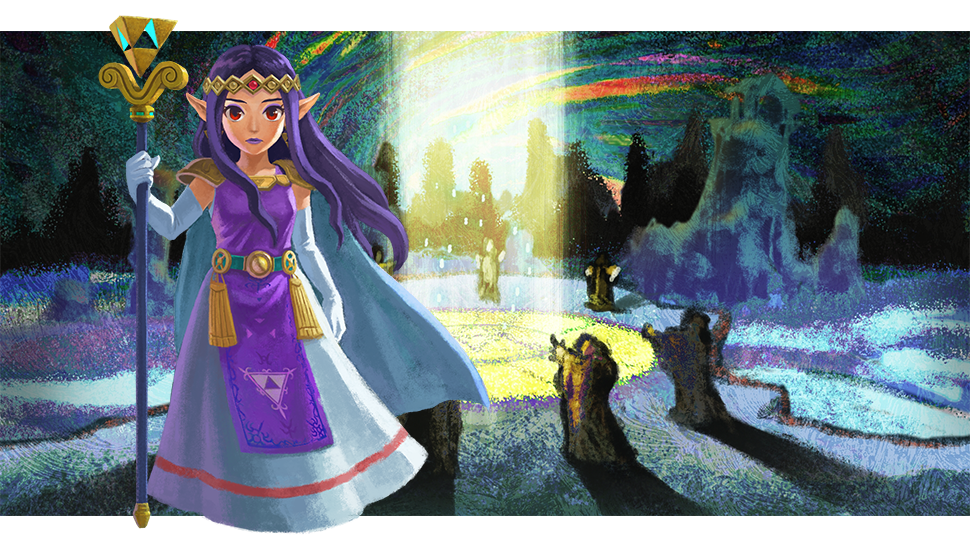
OK, so it’s a bit formulaic. After his initial trials in the land of Hyrule, Link travels to a different-yet-similar world, where he has to do at least seven things, which likely means at least seven dungeons to delve. What’s different in A Link Between Worlds is how Link approaches these challenges: however he wants however he wants.
After years spent being led about by the nose from objective to objective, A Link Between Worlds drops some marks on the map and leaves us to our own devices. “Go explore” it says. “The Seven Sages? They aren’t going anywhere. Have you tried the Rupee gathering mini-game?” It’s almost too much freedom for the die-hard Zelda fan to handle.
We own this new-found freedom to a little rabbit-hatted guy named Ravio. Used to be we’d go to a dungeon, find a special piece of equipment, and then use that equipment to open up the next one. Ravio, a wandering merchant, decides Link’s home would make a great shop, and puts everything he needs to complete his tasks up for sale or rent.
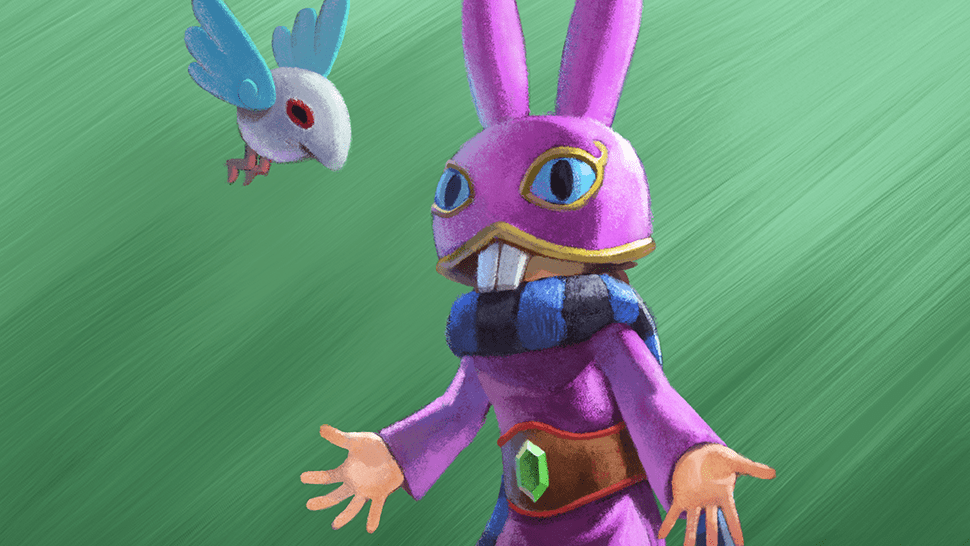
Need a hookshot to cross a ravine? He’ll rent you one for 80 rupees, with just one catch — if you die, he’s taking it back. It’s all incredibly convenient, at least until you come across one of the game’s rare challenging boss fights. After two or three trips home — even with the welcome addition of a checkpoint-based fast-travel system — you’ll become Link, destroyer of bushes, on a quest to gather the 800 rupees needed to buy the damn thing outright.
I wouldn’t worry about combat and boss fights too much, especially if you’re a veteran of the franchise. The refreshingly nonlinear quest structure keeps the game’s core dungeons at a relatively even difficulty level, at least as far as combat is concerned. There’s the odd challenging boss fight, but overall fighting is a breeze.
That doesn’t mean there’s no challenge in A Link Between Worlds. It’s just a much more cerebral challenge. More so than any other, this is the thinking person’s Zelda game.
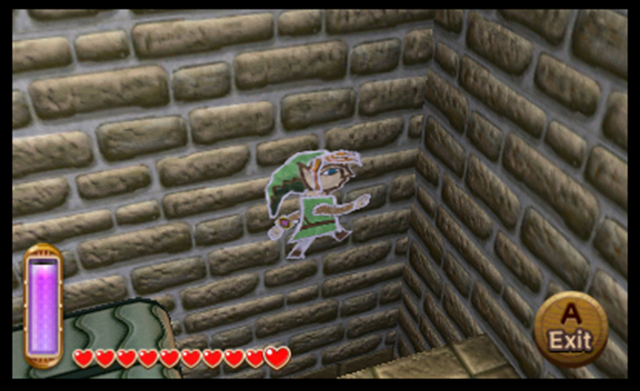
Link’s newfound ability to transform himself into a mobile painting on nearly any flat surface is used to tremendous effect. Moving side-to-side along surfaces adds an extra dimension to both dungeon puzzles and general exploration, one I still found myself overlooking some 15 hours in, poised at the brink of the game’s final confrontation. You have to think differently. Too many times I banged my head against a particular problem for long periods, only to realise a simple shift into Painting Link was all I needed.
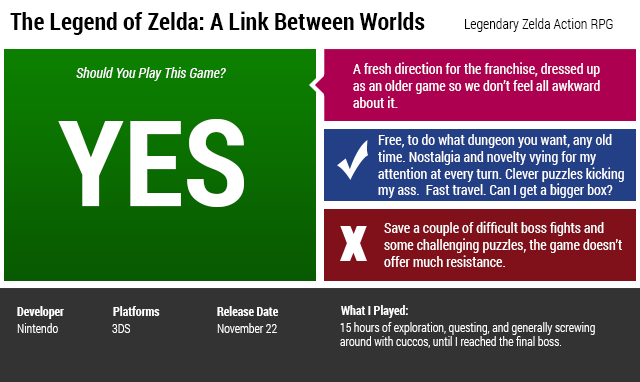
It can get frustrating, but it’s all part of the joy of a game that sets you free and doesn’t hold your hand. You can explore and experiment to your heart’s content in A Link Between Worlds, and the game will never judge. There are no pop-ups telling you how to use a weapon or how to approach a particular problem. There is a help system in place — Hint Ghosts only seen through special glasses linger near difficult problems, prepared to give advice in exchange for Play Coins — but you never have to put those glasses on. It’s your quest. Complete it as you will.
While firmly rooted in the past, The Legend of Zelda: A Link Between Worlds is the most progressive game the franchise has seen in ages. It breaks the standard formula in so many wonderful ways, while draped in familiar trappings to ease the transition for long-time fans. It’s a new way to play Zelda, and it’s so much more satisfying than the same thing only in 3D.
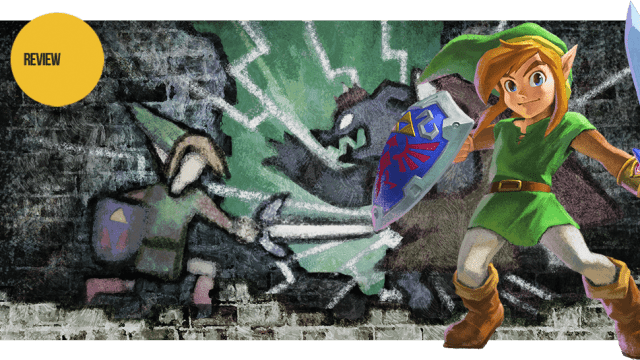
Comments
23 responses to “The Legend Of Zelda: A Link Between Worlds: The Kotaku Review”
When was this game announced? It really feels like this game has only existed within the last month or so.
It was revealed back in July I think? Maybe even as far back as E3, I don’t recall.
Everyone is saying it is the best since ocarina. They also said that about skyward sword… an that game sucked.
What was wrong with Skyward Sword (genuine question as I’m interested in getting it)
I found it generally OK, but I found there was a LOT of back and forth between areas, and geez oh man I got so sick of flapping that damn controller to fly the damn bird.
I wouldn’t rate it the best myself.
My rankings would be
Link to the past > Ocarina > Wind waker > Twilight princess > Skyward Sword
(only ones I have played so cannot comment on others)
I thought Skyward Sword was fantastic. Far from the best Zelda, but still very enjoyable.
Deathcake summed it up.
I also felt that it was very bland from art style to dungeons and story. I think I may have gotten about half way through and just had no urge to keep going.
Also I remember the intro being a huge grind on par with AC3
I love the Zelda universe but that one just didn’t grab me. I know quite a few people who feel the same.
Skyward sword was actually really well designed. The only problem was the annoying beeping sounds and overt hand holding they were associated with. Lots of fun with the wii mote plus.
I actually think Skyward sword would have been more enjoyable if they removed those damned motion control controls. The first boss battle took me hours to finish because I could never get the sword to swing in the correct angle..
I would call myself a BIG zelda fan and i really disliked Skyward Sword. I felt so boxed in while playing, like i had nowhere to explore. You have to revisit places many many many times. Revisiting places can be totally fine if the world is big enough for it not to fell repetitive. This game did feel repetitive. And the controls drove me crazy,
There are definitely great things about it, but as a fan who normally plays each zelda game over and over again, i can honestly say i will never play it again.
Can’t be the best since Ocarina. Majora already happened 😛
Ok I have got this game on preorder (with the 3DS XL) but just a question. Do I need to have played A Link to the Past prior to playing this?
My guess would be no. I think it’s more a spiritual sequel set in a similar overworld.
Play it first. No bullshit Link to the Past is the best Zelda of all.
Looks amazing. I’m missing out on one hell of a lot of awesome games by not owning a 3DS.
I’m not sure about being able to rent/buy equipment. I loved the feeling of beating a dungeon and then finding out what piece of equipment you’d earn.
Everyone i’ve seen (except for some cock smoker at Destructoid) has given this a solid gold score. I am soooo pumped for this!!!!!!!!!!
I’m glad they gave it a 6.5. Not only does it highlight how pointless the number scoring is, but that the number system (particularly in games) has no variance, when it should.
The person felt that it was a 6.5, and you know what, good on em. Some others will too, some others will also think its the greatest game ever.
Now this is the recognition it deserves! I read Destructoid’s review, and they gave it a 6.5/10, saying IT HAD NO SOUL, which I find to be really weird…
If I weren’t in the middle of paying off my Xbox One preorder I would totally rush out and get this.
Skyward Sword was still a wagglefest. That right there was the problem. They made it sound like the controls were tightened up after the Wii version of Twilight Princess, but all I wanted to do was put down the Wiimote and use my GCN Wavebird to play it.
Because of this aspect, I even went back and bought the GCN version of TP. Motion controls suck. Just because they can, doesn’t mean they should.
I’ve been a fan of this type of Zelda game since Link to the Past. I do love the Ocarina of Time as well, but I was hoping a return this type of game play genre since it was one of my favourites. I do hope there be multiplayer or something in this game like four swords. I like playing missions or anething with my friends to. I already pre ordered my copy and Zelda Limited Edition before it ran out of stock from Ebgames.
I’m really excited for its arrival and the game as well 😀
Double post
Stopped reading the review after the first 3 paragraphs. I dont wanna hear a nostalgia story 😛